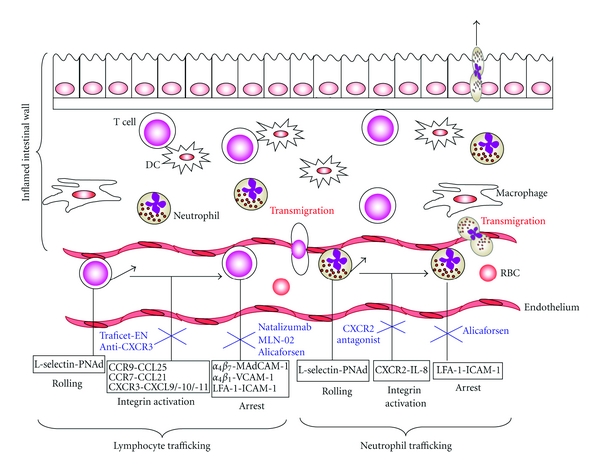Figure 1.

Schematic view of the leukocyte trafficking adhesion cascade in IBD. Leukocytes tether and roll along the vascular endothelium via selectin-mediated adhesion. They are then activated by chemokines into a high avidity, high affinity state so that integrin-mediated strong adhesion and arrest can take place. This prepares the leukocyte for transmigration through the blood vessel wall into the inflamed colon. Chemokine activation can be inhibited by various chemokine/chemokine receptor inhibitors such as the CCR9 small molecule antagonist Traficet-EN, a monoclonal antibody to CXCR3 or a CXCR2 antagonist (shown in blue). Additionally, antagonists of integrin firm adhesion include the anti- α 4 integrin monoclonal antibody Natalizumab, the selective α 4 β 7 small molecule antagonist MLN-02 and the antisense intercellular adhesion molecule-1 (ICAM-1) oligonucleotide Alicaforsen (shown in blue). KO, knock out; LFA-1, Lymphocyte function-associated antigen 1; MadCAM-1, mucosal addressin-cell adhesion molecule 1; PNAd, Peripheral lymph node addressin; RBC, red blood cell; V-CAM-1, vascular-cell adhesion molecule 1.
